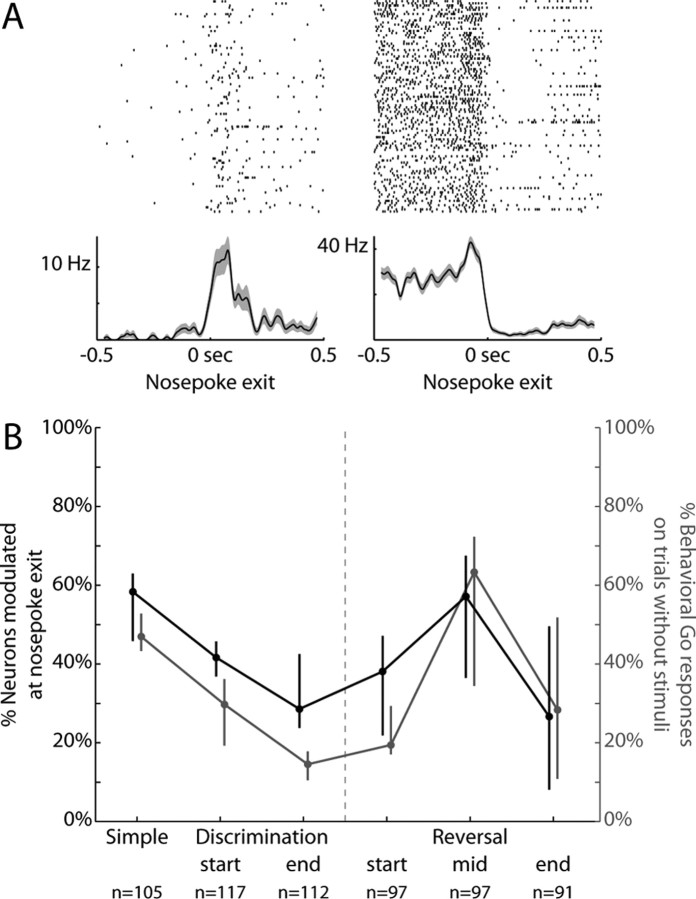Figure 5.
Response-related activity tracked the behavioral bias to respond. A, Rasters and peri-event time histograms are presented from two neurons whose activity changed around the time of nosepoke exit (±200 ms, signrank p < 0.05). Of the neurons whose activity was modulated around response initiation at the Simple RT stage of training, slightly more than half increased their firing rates following nosepoke exit (as on the left, 61%, 34/56), while the rest decreased their firing rates (as on the right, 39%, 22/56). B, The percentage of neurons with changes in neural activity at nosepoke exit are plotted in black across the various stages of training. There was a significant change in the proportion of neurons modulated throughout training (ANOVA, effect of training during discrimination learning: F(2,16) = 6.8, p < 0.01; effect of training during reversal learning: F(2,15) = 4.6, p < 0.03). The percentage of behavioral Go responses on catch trials is replotted in gray as a measure of bias to respond. The training stages at which there was most likely to be nosepoke-related changes in neural activity were also those during which the response strategy was most likely to be driven by bias. Response-related neural modulations and the behavioral bias to respond were positively correlated for most rats (78%, 7/9; mean r = 0.37, SD = 0.44) and the correlations were significantly >0 across subjects (t test comparison to 0, p < 0.05).

